We use cookies and other technologies to personalize your experience and collect analytics.
Forty
Steve Harrison
Steve Harrison
Forty
11 April – 17 May 2025
Modern Art is pleased to present Forty, an exhibition of works by Steve Harrison, celebrating four decades of work in ceramics. The exhibition showcases Harrison's ongoing series The Loft Pots. Works from this series are notable for being stored in his attic, after being fired, due to their deeply felt significance to the artist, and the majority have remained there until now. The centrepiece of the exhibition spans forty years of Harrison's production of The Loft Pots, with each year being represented by at least one work.
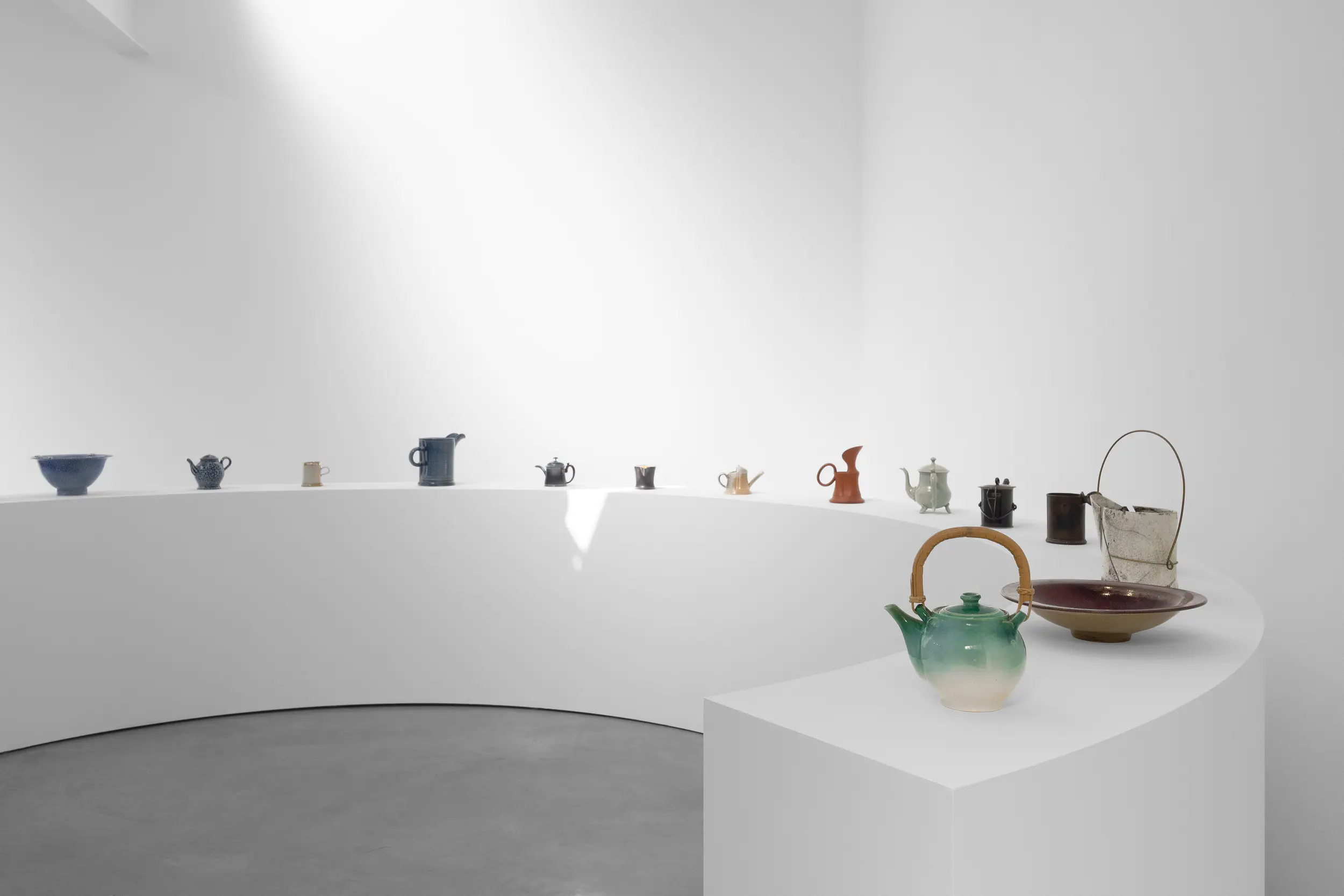
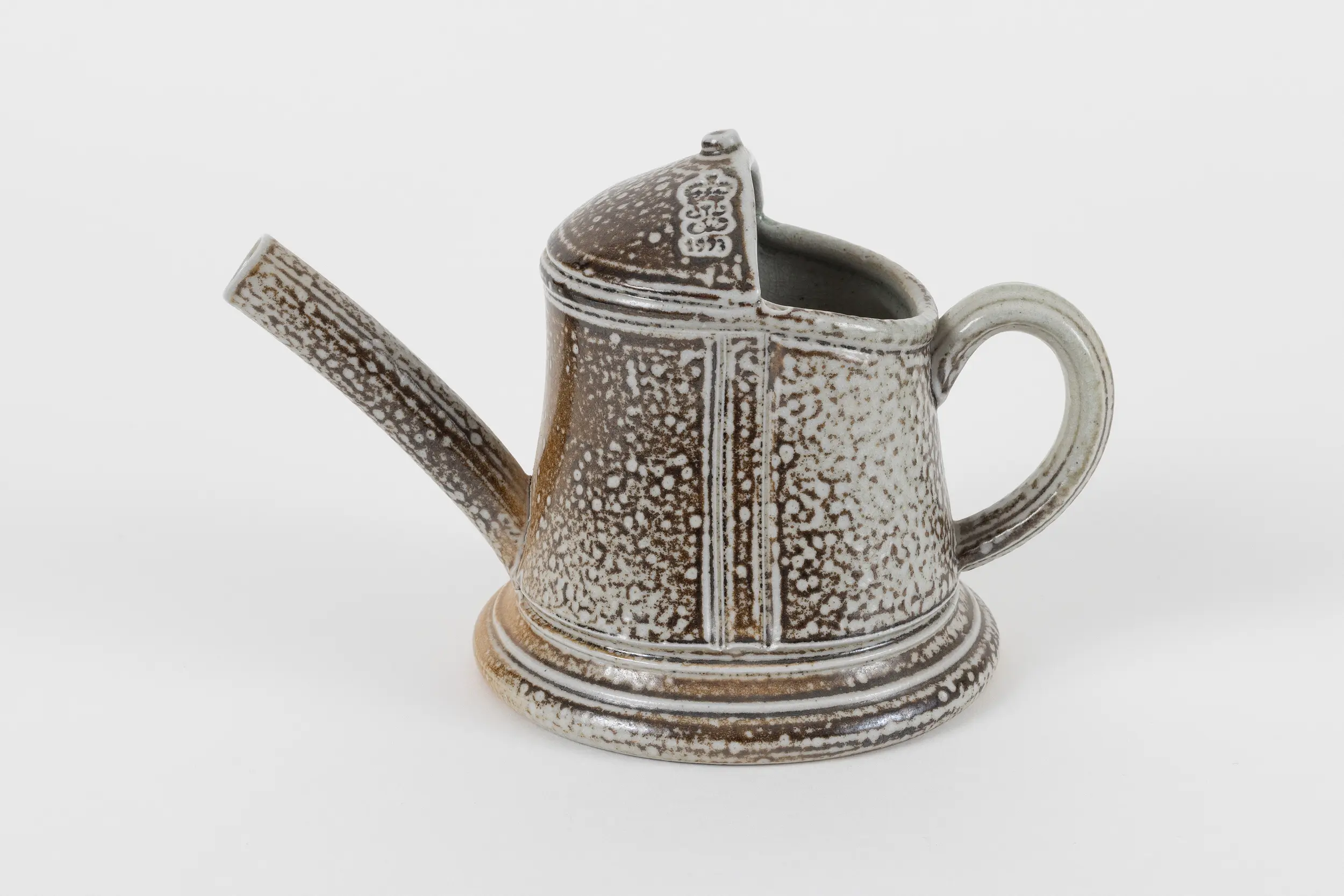
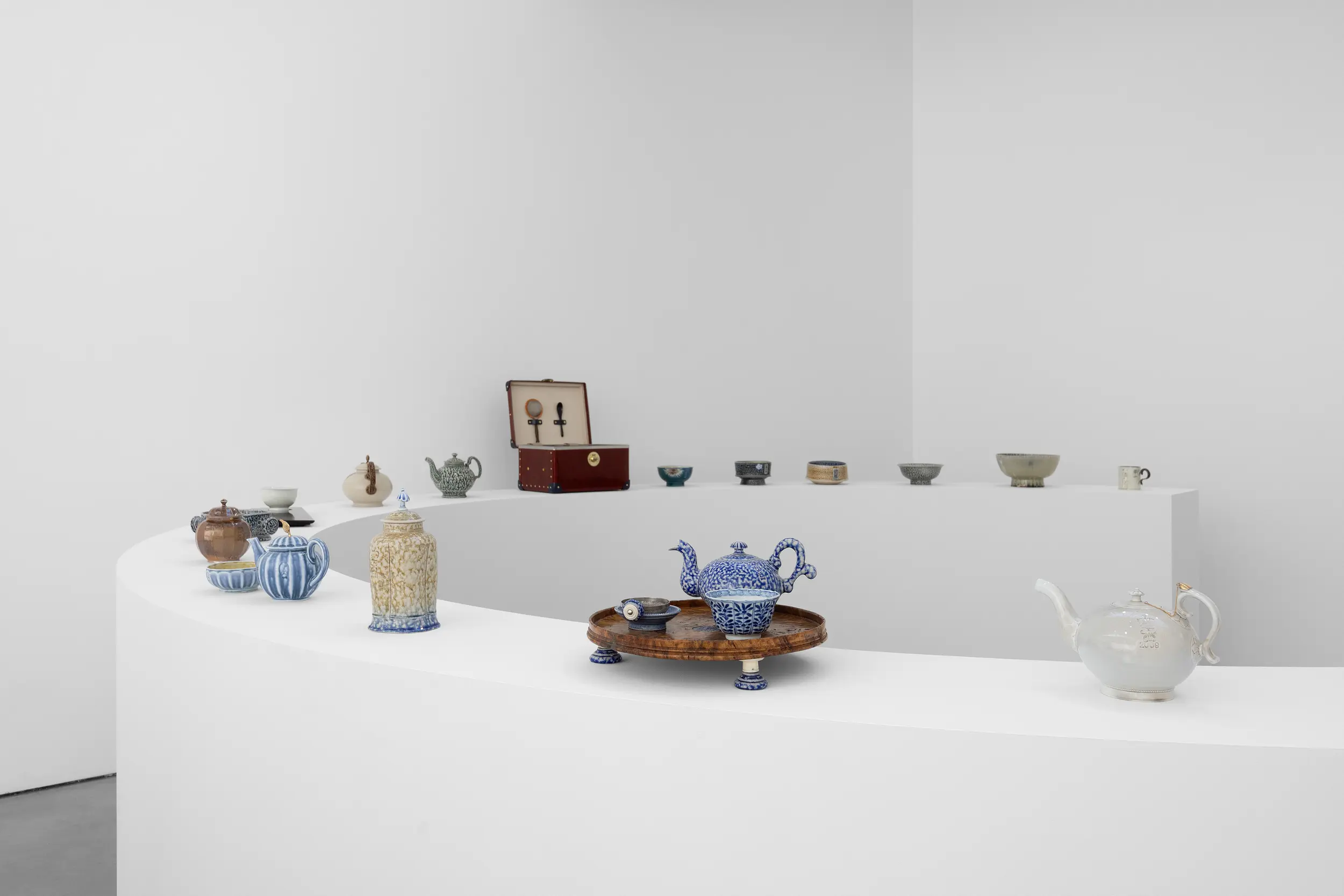
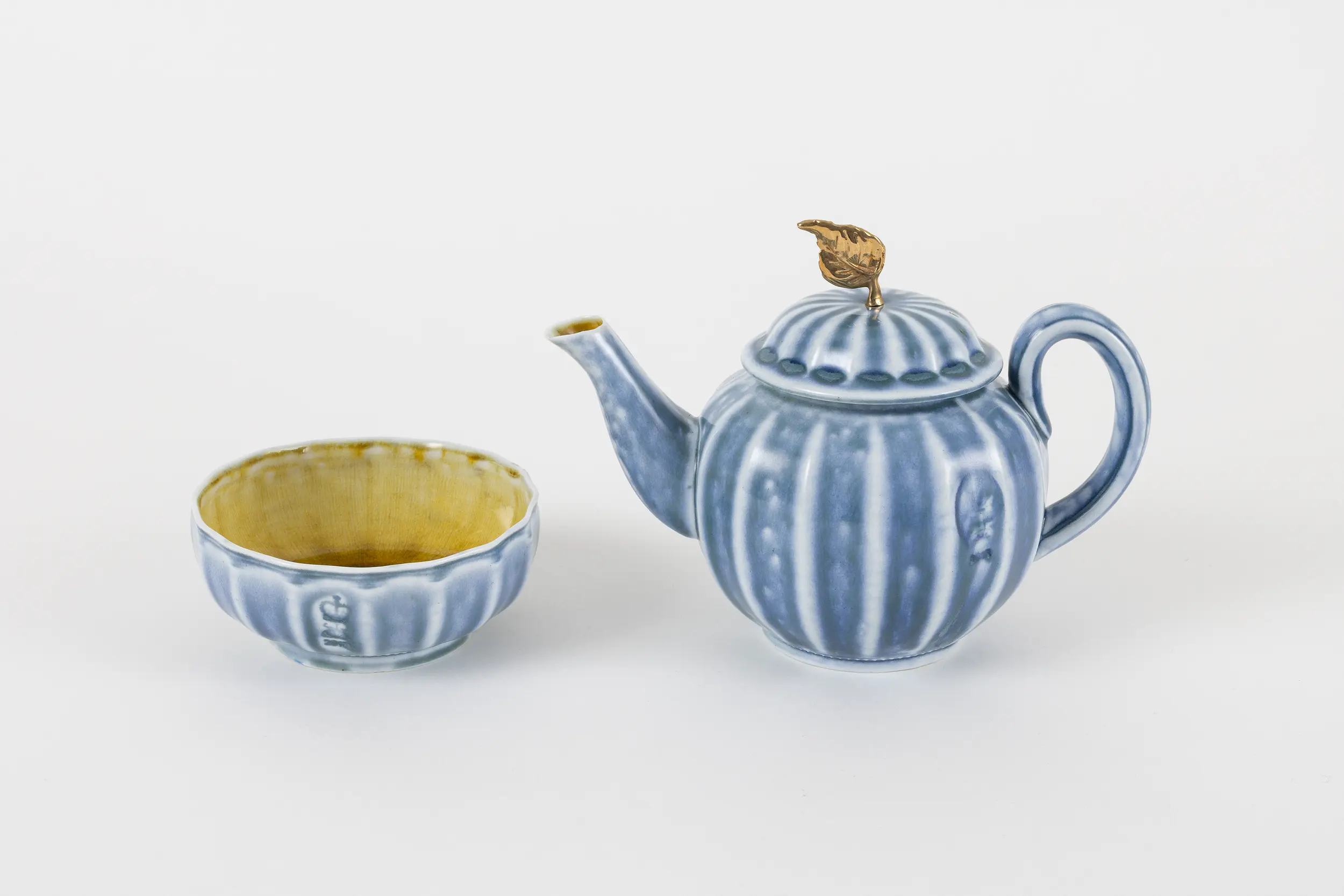
This includes work from his time as a student up to the present day, with a new piece created especially for this occasion. Alongside this, Harrison has selected a range of objects including mugs, teapots, beakers, jars and tea sets from across his career. This represents the most significant presentation of his archive to date, many of these objects, having never been seen before. Considered as a whole, this selection reflects the depth and range of his concerns, techniques, and recurring motifs, as well as the evolution of his formal mastery.
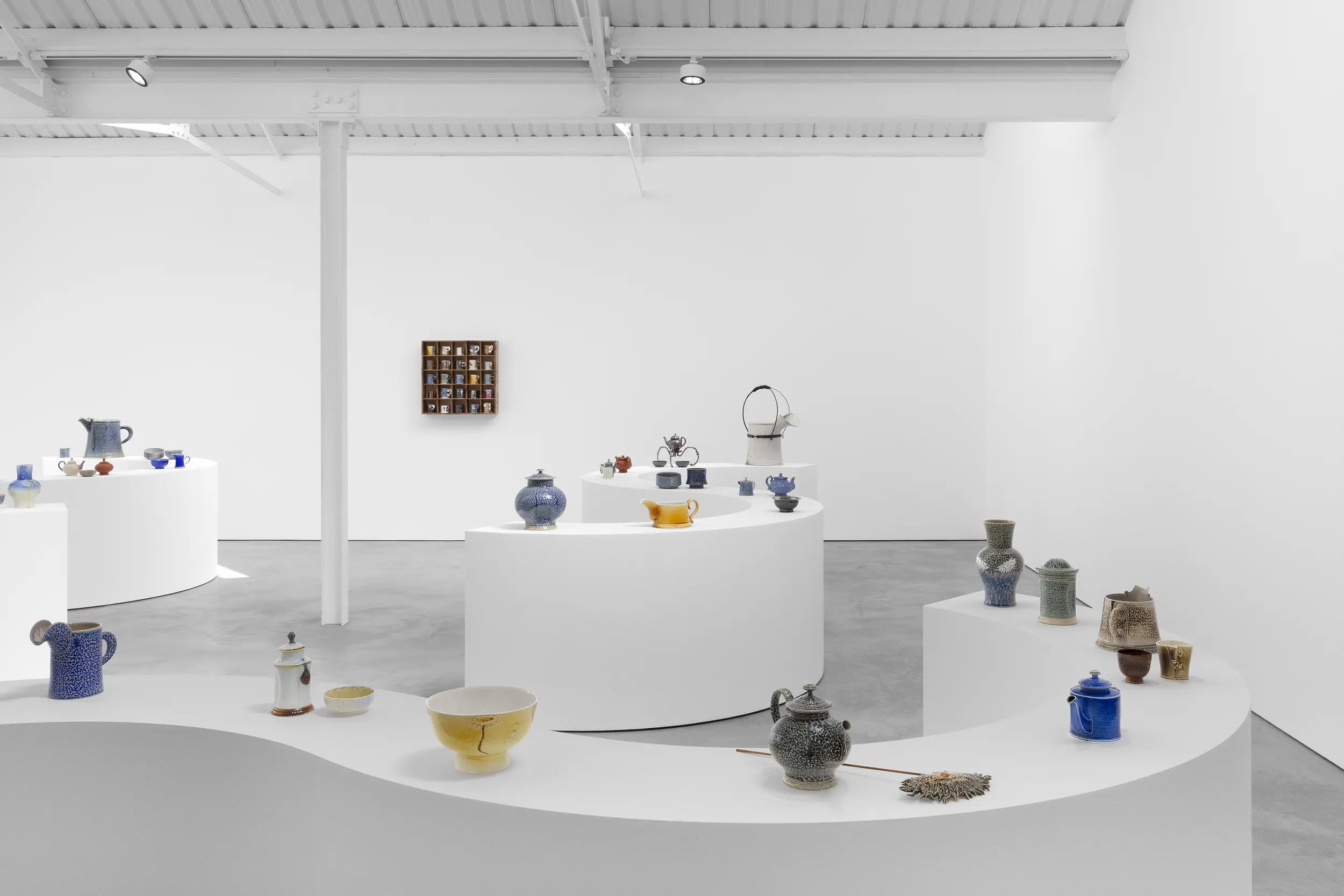
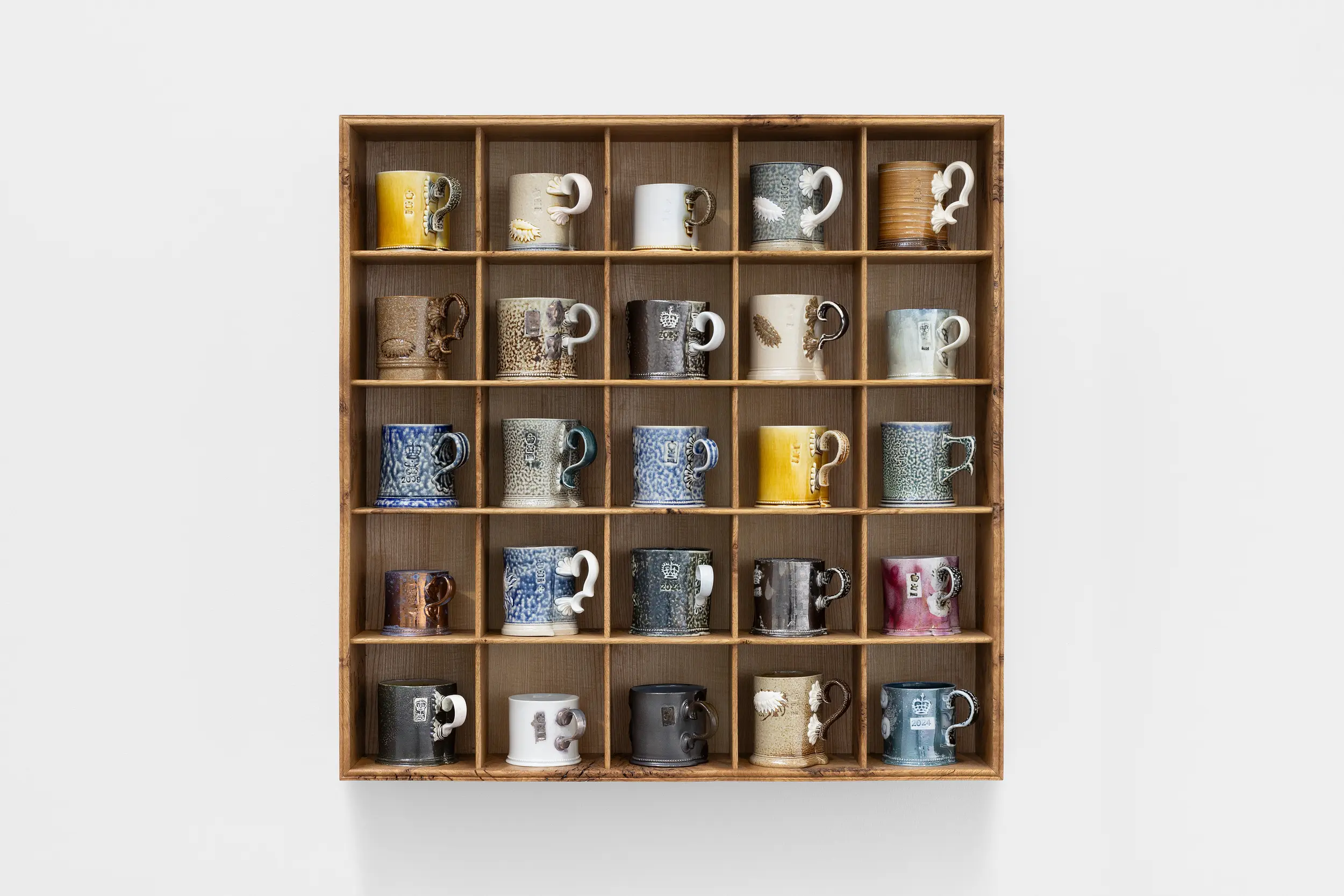
“A tea pot starts with a thrown body and a thrown lid, allowing time for it to dry so it can be turned upside down on a chum creating the foot detail. On the same chum the lid can be turned and then a knob thrown on top. During the drying I often press mould several spouts and handles to offer up during the making. This is because I always make with the idea of a tea pot and not the defined form. This ensures surprises and excitement every time I make. I am at a stage in my life where I am able to make 6 – 8 tea pots in a week. They are labour intensive with bosses, porcelain handles, stoneware bodies and even though I am competent, I know I will lose a third in the process of drying, biscuit firing and salt glazing."
– Steve Harrison, 2018
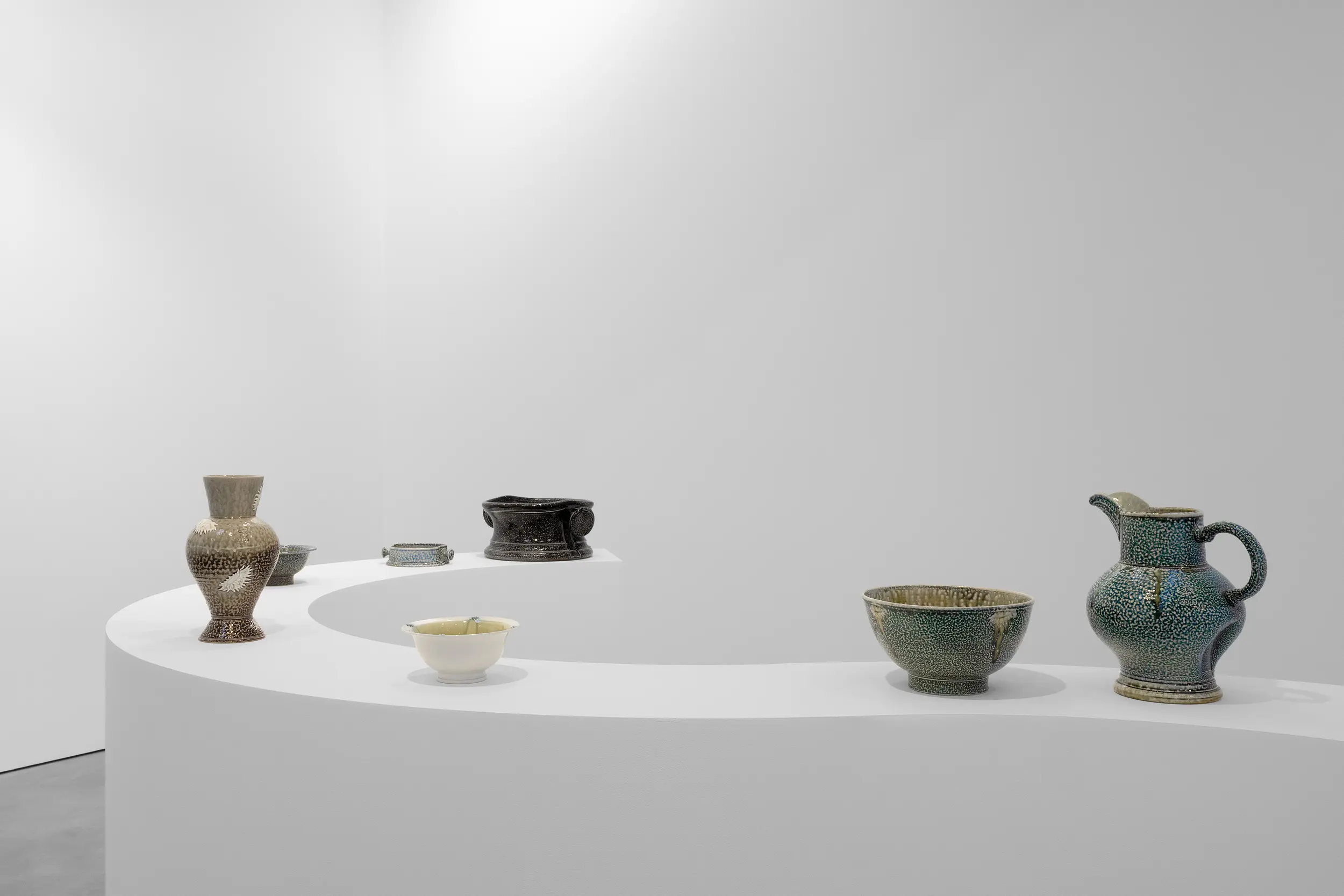
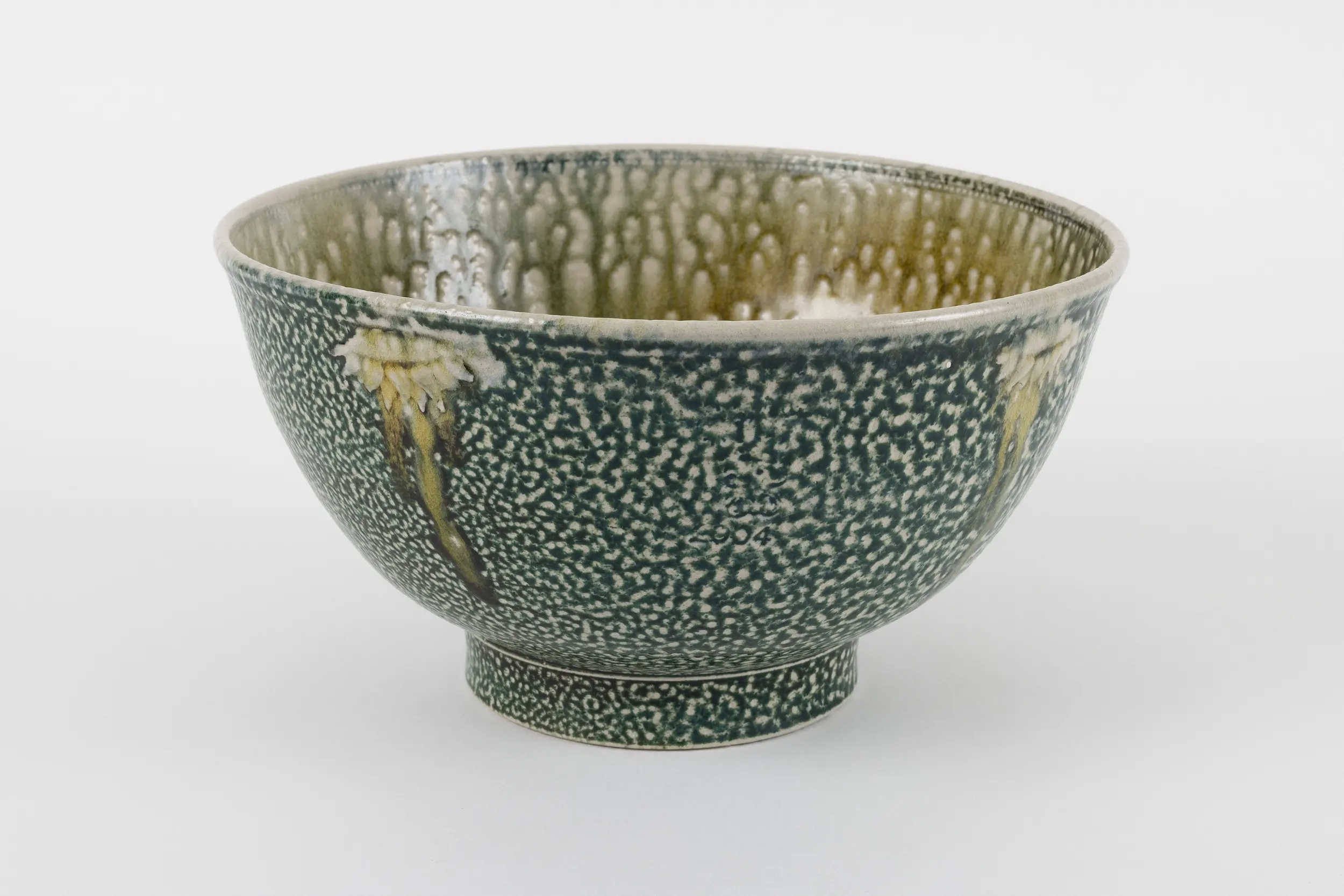
Harrison's ceramics are made using ancient techniques, such as throwing and press moulding stoneware and porcelain clay. Firing his work in a salt kiln in Wales that he built himself produces the distinctive orange peel patination that makes his work so distinct. As with all processes that rely on a capricious element, Harrison can never know what the final fired work will look like.


"Cup Boards referred to the medieval period, when the few mugs or jugs owned by households could be stored on a single board. These were later fitted onto walls, then several shelves were fitted into alcoves, which later were shut off behind doors Hence ‘cup boards’ metamorphosed into modern cupboards. That’s what Harrison, an established mid-career potter, told me. He welcomes those with a serious interest in his work to visit his studio, so I travelled to see him in Enfield, London.
Observing pottery-laden shelves in his family’s terraced Victorian home, and the contents of his well-organised studio, provided confirmation that pots are indeed his passion, as well as his profession."
– Colin Martin, 2016
Each pot is not only handmade but reliant on the variable conditions of its making, from the age of the kiln when it's fired, to the amount of salt in the kiln, and crucially the shape and form Harrison has bestowed it. Harrison’s ceramic and porcelain work is immediately recognisable for being extremely fine, but contrary to the idea that his work should be protected because of this, it's integral to Harrison that their purpose is for use.

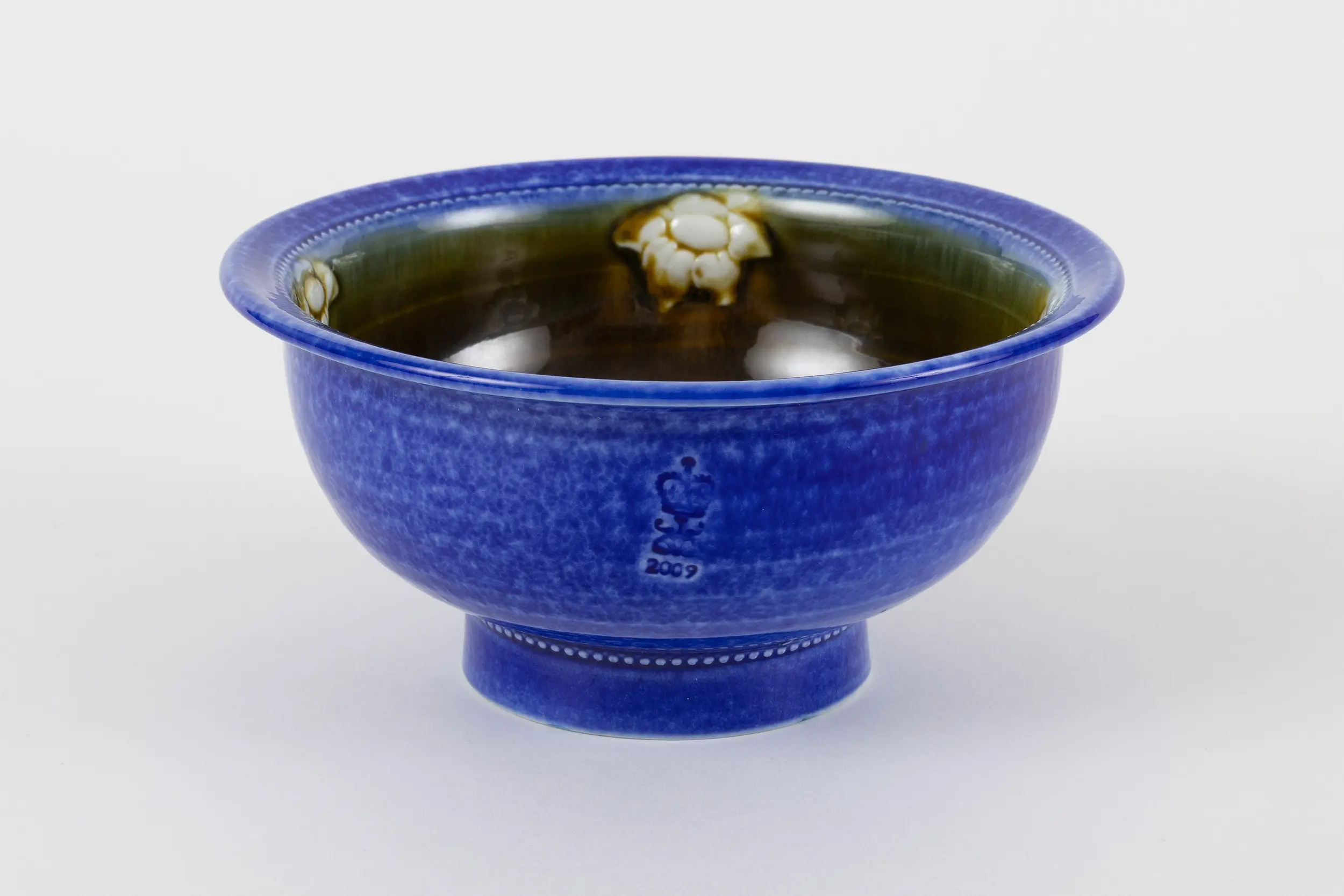
Steve Harrison was born in 1967 in Newcastle upon Tyne and lives and works in London, conducting salt glaze firings from a studio in Powys, Wales. He received his BA from Middlesex Polytechnic, London (1991) and completed his MA at the Royal College of Art, London (1993). Between 1994–2014 Harrison was a lecturer in ceramics at institutions including Camberwell College of Arts and The University of Manchester. His work has been the subject of numerous presentations across the United Kingdom and East Asia including: Art Collaboration, The Shophouse, Kyoto; (2024); The Shophouse, Hong Kong (2024, 2023); Blue Mountain School, London (2022, 2021, 2019); Arts & Science, Tokyo (2023, 2019); and Globe-Trotter, London (2018). His works are in public collections including Nottingham Museum and Leicester Museum and Art Gallery.
Press release
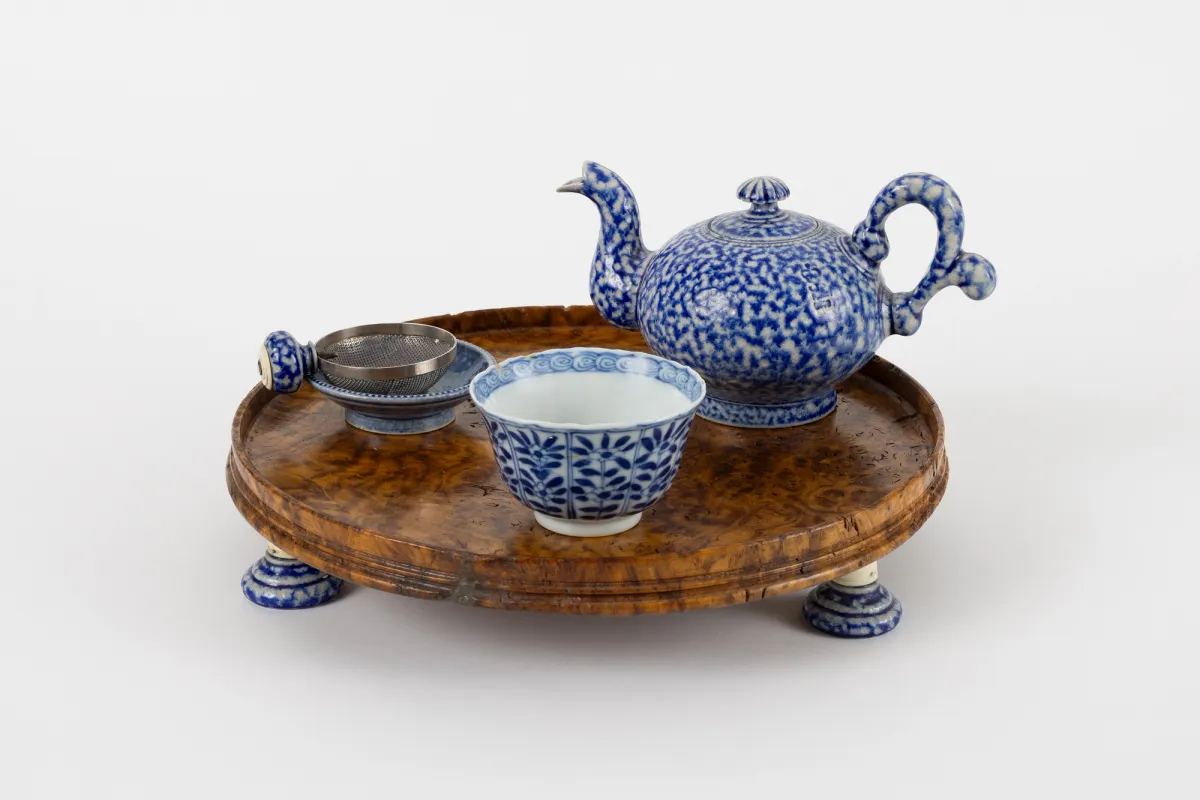
Modern Art is pleased to present Forty, an exhibition of works by Steve Harrison, celebrating four decades of work in ceramics.
The exhibition showcases Harrison's ongoing series The Loft Pots. Works from this series are notable for being stored in his attic, after being fired, due to their deeply felt significance to the artist, and the majority have remained there until now. The centrepiece of the exhibition spans forty years of Harrison's production of The Loft Pots, with each year being represented by at least one work. This includes work from his time as a student up to the present day, with a new piece created especially for this occasion. Alongside this, Harrison has selected a range of objects including mugs, teapots, beakers, jars and tea sets from across his career. This represents the most significant presentation of his archive to date, many of these objects, having never been seen before. Considered as a whole, this selection reflects the depth and range of his concerns, techniques, and recurring motifs, as well as the evolution of his formal mastery.
Harrison's ceramics are made using ancient techniques, such as throwing and press moulding stoneware and porcelain clay. Firing his work in a salt kiln in Wales that he built himself produces the distinctive orange peel patination that makes his work so distinct. As with all processes that rely on a capricious element, Harrison can never know what the final fired work will look like. Each pot is not only handmade but reliant on the variable conditions of its making, from the age of the kiln when it's fired, to the amount of salt in the kiln, and crucially the shape and form Harrison has bestowed it. Harrison’s ceramic and porcelain work is immediately recognisable for being extremely fine, but contrary to the idea that his work should be protected because of this, it's integral to Harrison that their purpose is for use.
Steve Harrison was born in 1967 in Newcastle upon Tyne and lives and works in London, conducting salt glaze firings from a studio in Powys, Wales. He received his BA from Middlesex Polytechnic, London (1991) and completed his MA at the Royal College of Art, London (1993). Between 1994–2014 Harrison was a lecturer in ceramics at institutions including Camberwell College of Arts and The University of Manchester. His work has been the subject of numerous presentations across the United Kingdom and East Asia including: Art Collaboration, The Shophouse, Kyoto (2024); The Shophouse, Hong Kong (2024, 2023); Blue Mountain School, London (2022, 2021, 2019); Arts & Science, Tokyo (2023, 2019); and Globe-Trotter, London (2018). His works are in public collections including Nottingham Museum and Leicester Museum and Art Gallery.
For more information, please contact Pascale de Graaf (pascale@modernart.net).














